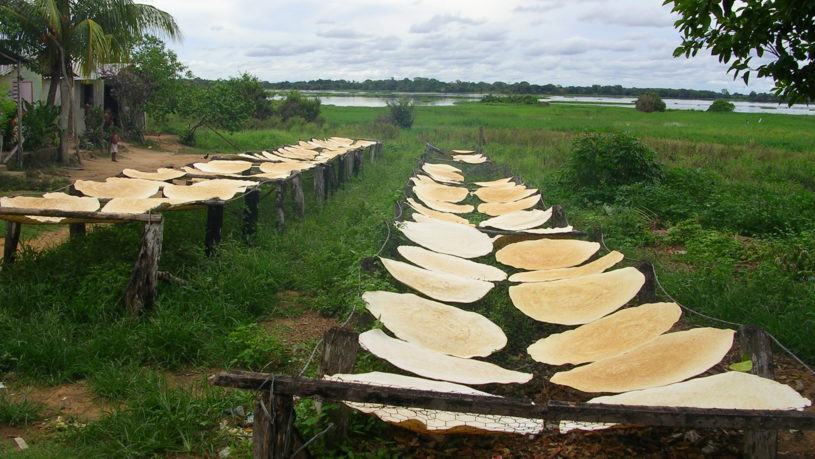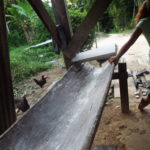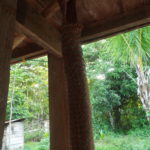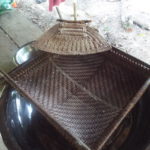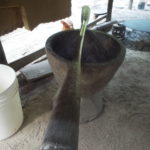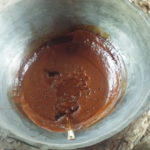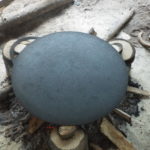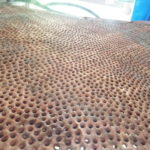The Indigenous People of South America and the Caribbean have many interesting and tasty traditional dishes, one of these traditional dishes is cassava bread. Cassava Bread is made from bitter cassava. This type of cassava can be potentially deadly if not peeled and cooked correctly.
The Prime Suspect
Cassava is a hardy shrub that is indigenous to South America and Caribbean, the root of this plant is harvested for food. Cassava comes in two varieties, (1) Sweet Cassava, (2) Bitter Cassava. Sweet Cassava is not poisonous and does not need any special process for it to be cooked, you can simply boil, fry or steam the cassava to be eaten. Bitter Cassava on the other hand is laced with cyanide, a deadly poison often associated with the suicide pill. This means in order to make Cassava Bread, the bitter cassava needs to go through a special process.
I will be detailing this process for you but seeing that bitter cassava is poisonous there is a risk of food poisoning and… well … death. Please don’t try this at home.
The Tools
- Hollowed out Tree used to drain the Cassava Juice
- Matapee used to squeeze juices out of the Cassava
- Sifter Basket and Fan Used to Sift the Cassava Powder
- Haku and Haku Rechie Used to Pound and grind the Cassava
- Cassa-Reep one of the many products made by the process
- Tawah Used for Baking the Cassava Bread
- Grater Used to Grate the Cassava
The Process To Make Cassava Bread
First of all the bitter cassava needs to be peeled and scraped until all of the brown, bark-like skin has been removed. The peeled Cassava must then be washed thoroughly and then must be grated and placed into a ‘container’. That ‘container’ traditionally and usually is a hollowed out tree, which is then placed at an angle so the juices can run down and out into a bucket. This juice is not thrown away but used to make various other products like Cassa-Reep ( a sweet, molasses like liquid used in the seasoning and preservation of food), Starch and… you guessed it Cyanide poison. These products are then used for various tasks within the community
Squeezing the Matapee
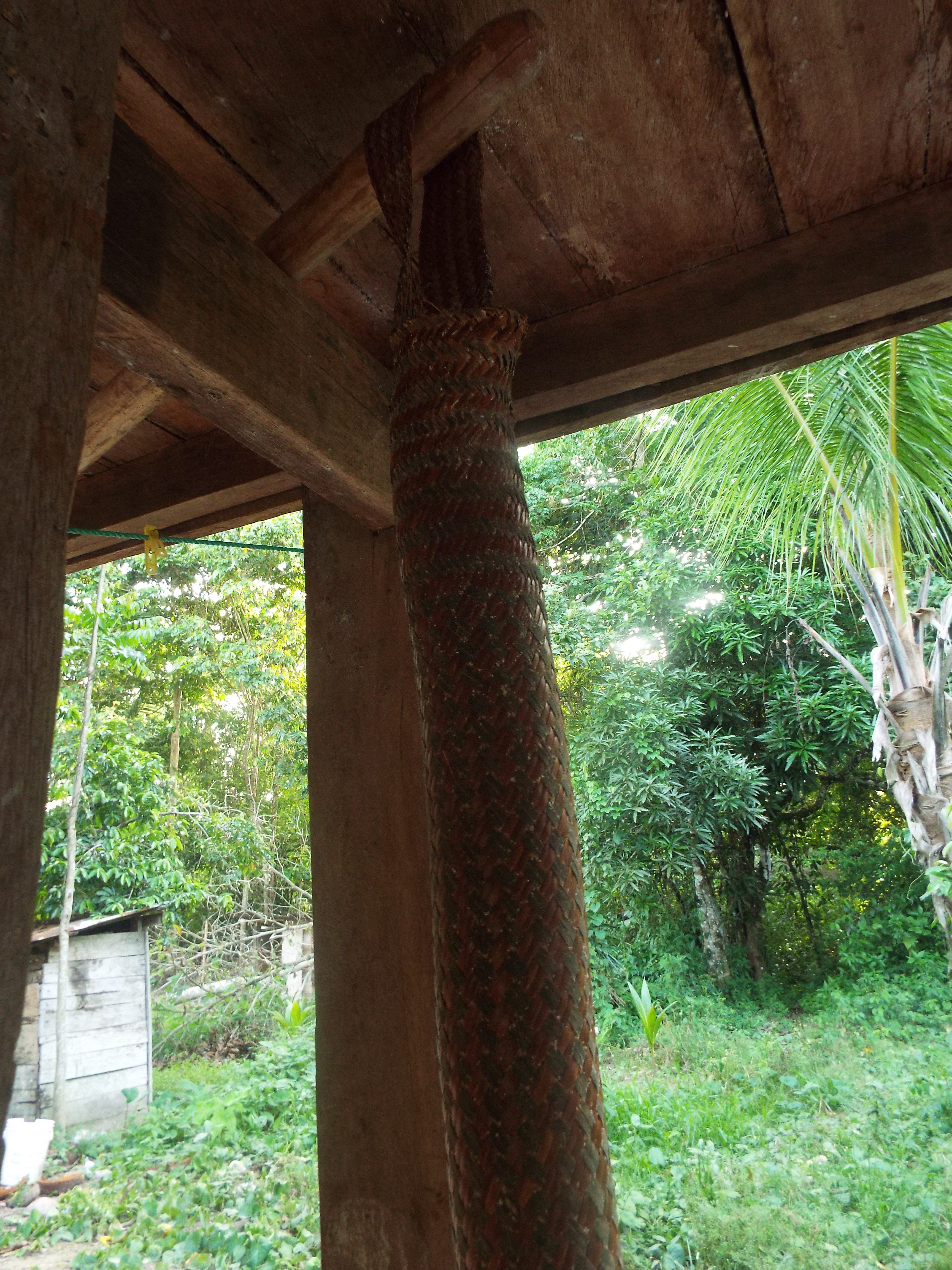 After the Cassava has been drained, the remainder of the grated cassava is then placed into a cylindrical strainer called a Matapee, which is woven from reeds by a craftsman. There are two loops attached to the Matapee, one at the top where there is an opening, while the other loop hangs below at the bottom where the Matapee is sealed. A container is placed underneath the Matapee, so that even more of the poisonous juice or liquid can be squeezed and drained out.
After the Cassava has been drained, the remainder of the grated cassava is then placed into a cylindrical strainer called a Matapee, which is woven from reeds by a craftsman. There are two loops attached to the Matapee, one at the top where there is an opening, while the other loop hangs below at the bottom where the Matapee is sealed. A container is placed underneath the Matapee, so that even more of the poisonous juice or liquid can be squeezed and drained out.
The top of the Matapee is then secured, usually with a rod or a stick, so the Matapee hangs vertically. A large stick is then placed through the bottom loop where a weight ( usually a person) sits, stretching and squeezing the Cassava inside allowing all of the juices to be squeezed out of the Cassava.
Haku and Haku-Rechie
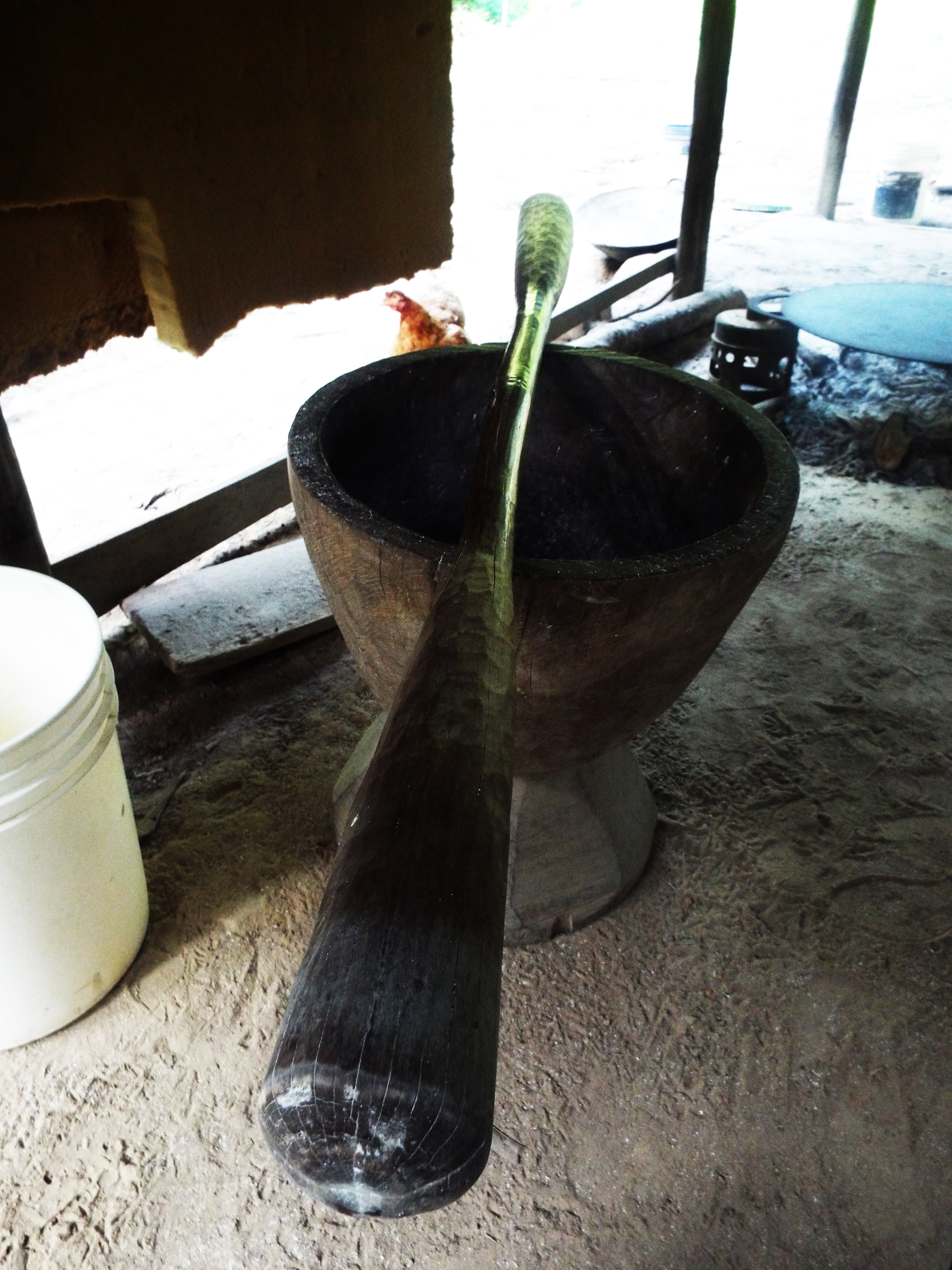
Once the Grated Cassava has been thoroughly drained it is then moved to the Haku (a large Mortar). Someone then begins to pound and grind the Cassava with a Haku-Rechie ( a large pestle ). When the Grated Cassava has been pounded and ground to a consistency of flour, it is then moved to a woven sifter basket to be sifted into a finer powder
Now comes the Baking, This ‘Cassava Powder‘ is placed on a large baking pan, called a Tawah, and is carefully spread around forming a large round flatbread, when it is golden and toasty it is taken off and put in the sun outside to dry.
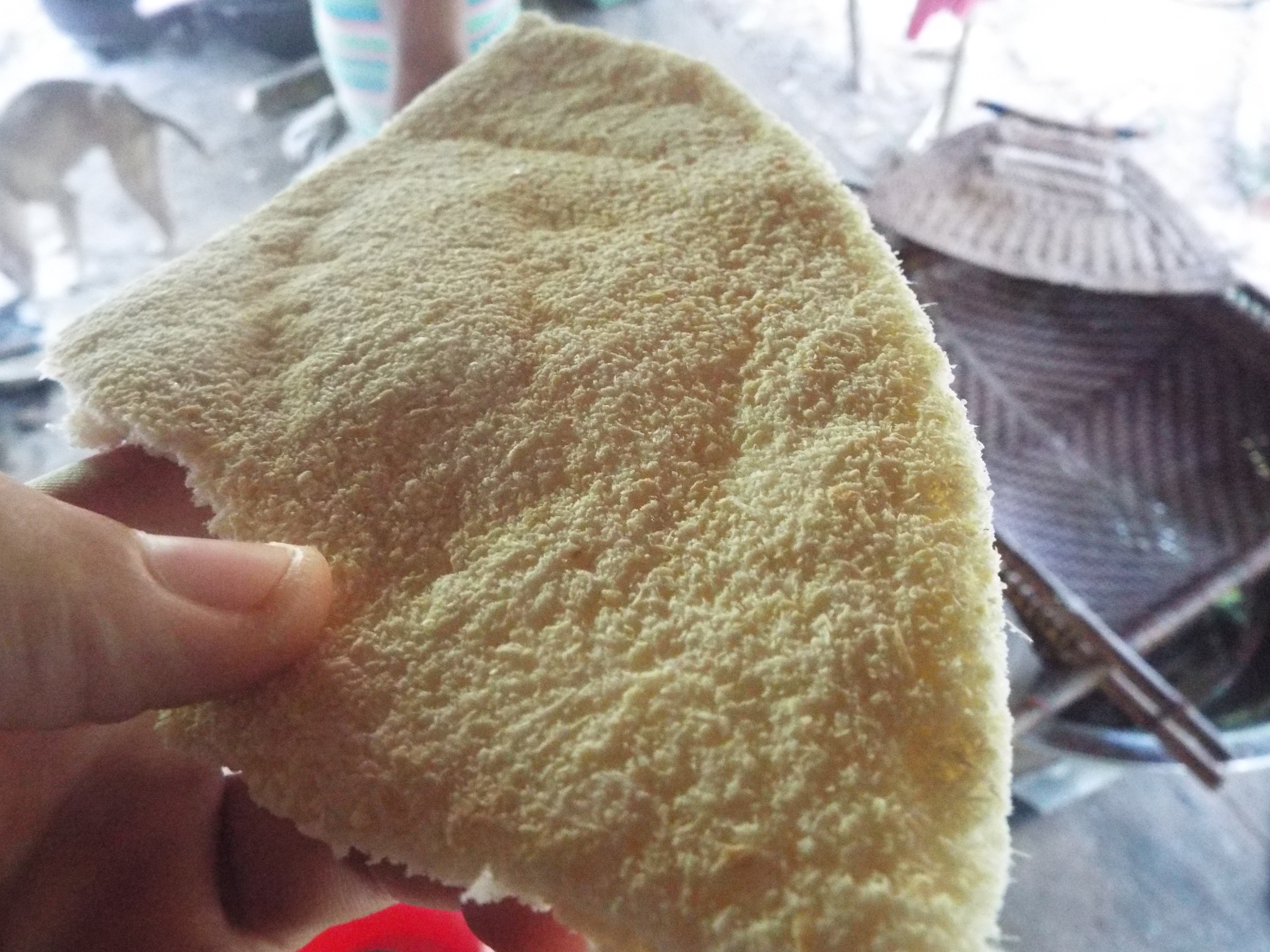
Finally we have Cassava bread, its now ready to be sold or better yet to share with family and friends to be eaten. Cassava bread can be eaten with a multitude of sides one of the main things the Indigenous people eat with cassava bread is Tabu. Tabu is Fish that has been prepared using one of the products made with the bitter cassava, ‘ Cassava juice’. And is absolutely delicious.
Explore one of the Amerindian / Indigenous Villages in Guyana Orealla .
Have you ever had Cassava Bread? Did you know it was such a long process? Let us know below.

